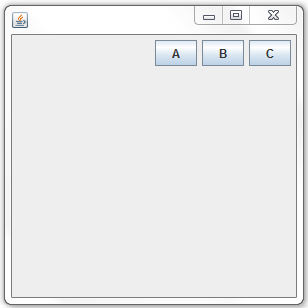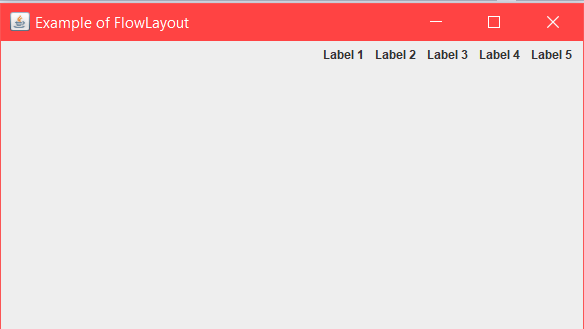


Public Sub AddControls(ByVal aControl As Control) Cells can contain anything a form can contain and behave in most other respects as containers. Cells can be merged across rows and columns. Its cells are arranged in rows and columns, and these can have different sizes. The TableLayoutPanel control allows you to place controls in a grid layout without requiring you to precisely specify the position of each individual control. The TableLayoutPanel arranges its contents in a grid, providing functionality similar to the HTML element.
#Center content in flowlayout java windows
Walkthrough: Arranging Controls on Windows Forms Using a TableLayoutPanel This can help you to make the center alignment in TableLayoutPanel control.įor further information on arranging controls in TableLayoutPanel, please take a look at the following article on the issue: Then you can see the control is in the center of the cell. Please change the default "Top, Left" to "None" for each control. There is Anchor property of the controls in TableLayoutPanel. Please put each of the control in each of the cells of TableLayoutPanel by changing the ColumnCount property. Public class JButton extends AbstractButton implements AccessibleĪlso illustarte Java JButton : An example with ActionListenerī.According to your question on add the controls in the center alignment, I would like to recommend you to use TableLayoutPanel instead of FlowLayoutPanel.įrom the picture shown in the link, it seems that you need to create the multi columns based on the number of controls. It inherits AbstractButton class.īelow is the declaration for class. The application result in some action when the button is pushed. The JButton class is used to create a labeled button that has platform independent implementation. inherit the JFrame class, so there is no need to create the instance of JFrame class explicitly.

Creating JFrame, JButton and method call inside the java constructor. We can also write all the codes of creating JFrame, JButton and method call inside the Java constructor.į.setSize(400,500) //400 width and 500 heightį.setLayout(null) //using no layout managersį.setVisible(true) //making the frame visible JLabel label = new JLabel("JFrame By Example") įtDefaultCloseOperation(JFrame.EXIT_ON_CLOSE) JFrame frame = new JFrame("JFrame Example") A program to add a label and button in a frame Let's see a simple swing example where we are creating one button and adding it on the JFrame object inside the main() method.
#Center content in flowlayout java code
We can write the code of Swing inside the main(), constructor or any other method. By creating the object of Frame class (Association).NoteThe Java Foundation Classes (JFC) are a set of GUI components which simplify the development of desktop applications.įigure 10.2 :Hierarchy of Java Swing classesĬommonly used methods in Component class:įigure 10.3 :Commonly used methods in Component class: The javax.swing package provides classes for Java Swing components such as JButton, JTextField, JTextArea, JRadioButton, JCheckbox, JMenu, JColorChooser etc. Java Swing provides better lightweight components than AWT. It is built on the top of AWT (Abstract Windowing Toolkit) API and entirely written in Java. Java Swing is a part of Java Foundation Classes (JFC) that is used to create window-based applications. Chapter 10 - Java Swing Chapter 10 Java Swing


 0 kommentar(er)
0 kommentar(er)
